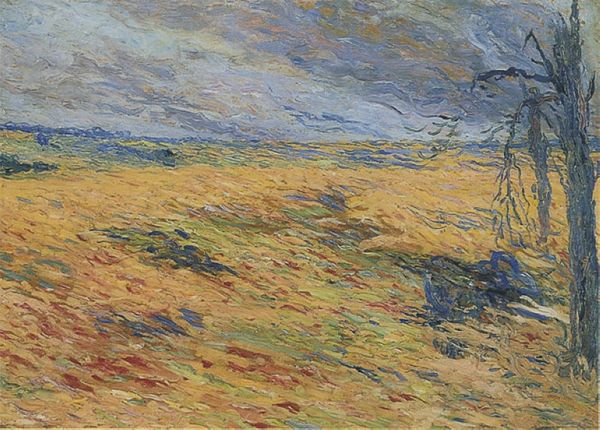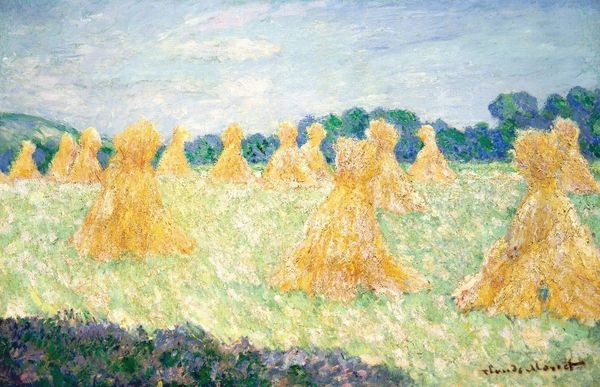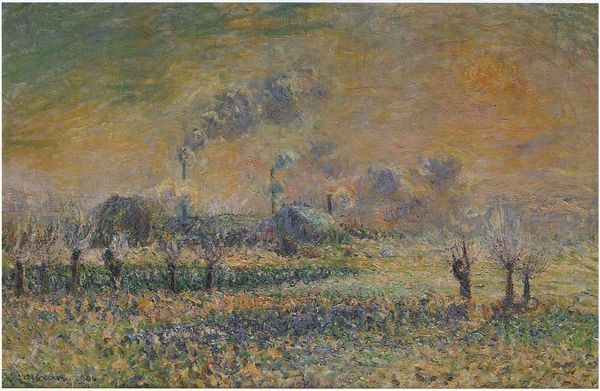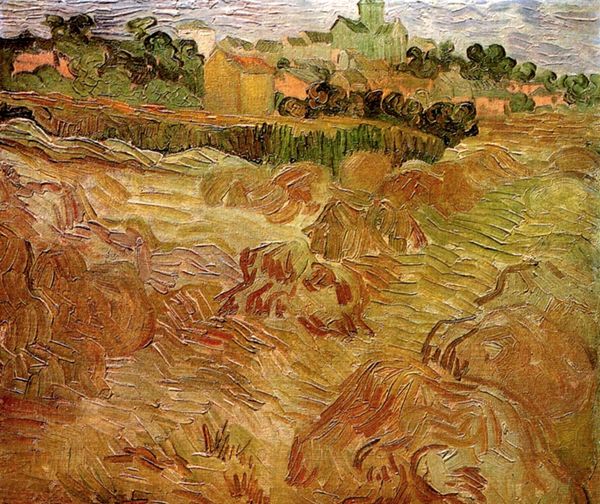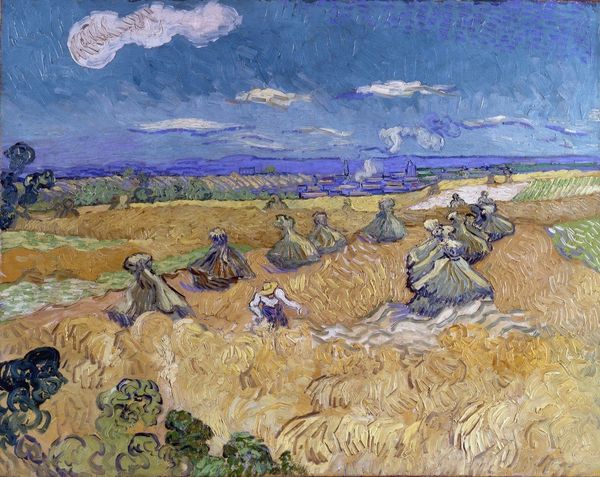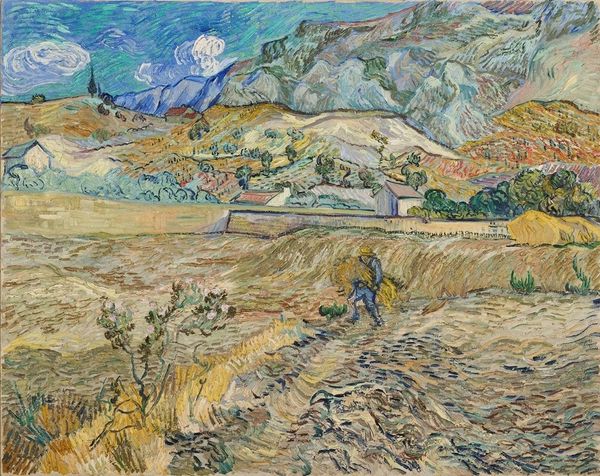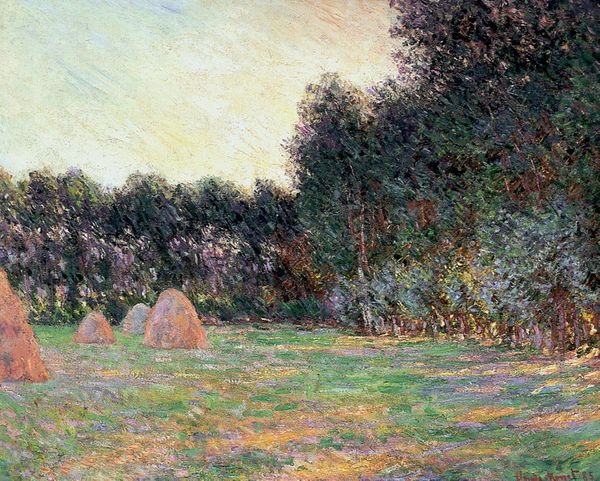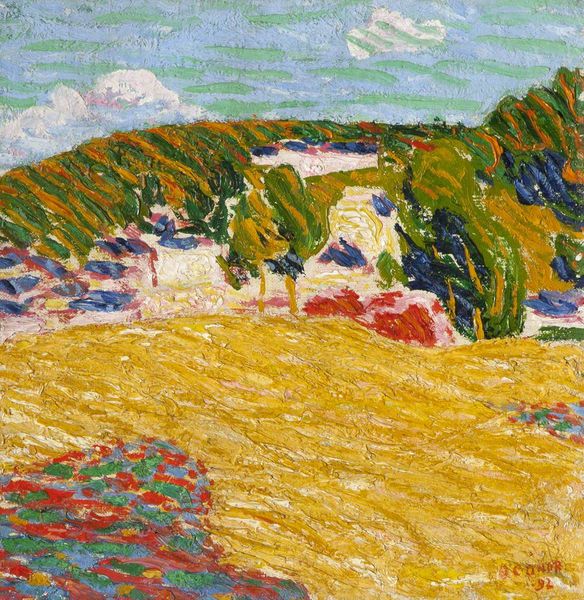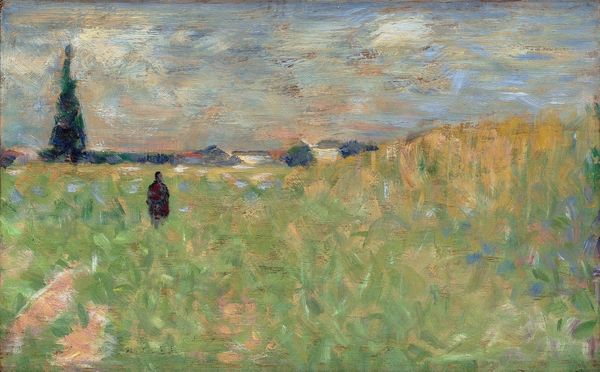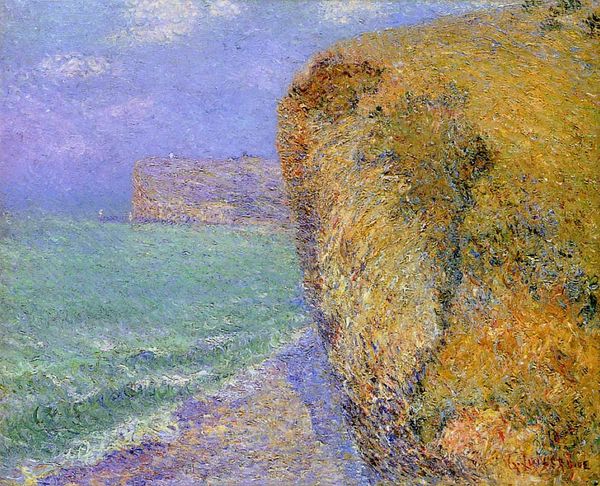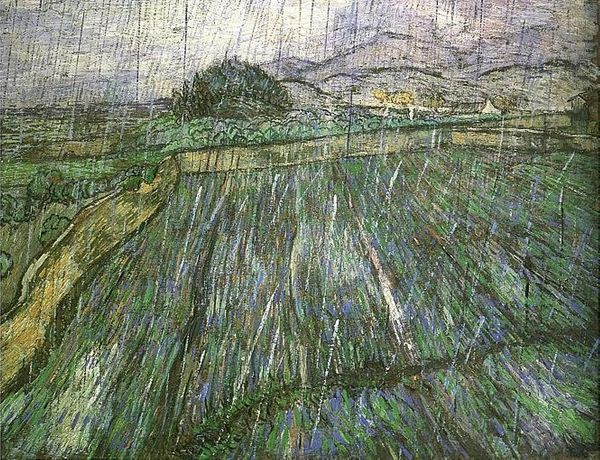
painting, plein-air, oil-paint
#
painting
#
impressionism
#
plein-air
#
oil-paint
#
landscape
#
impressionist landscape
#
figuration
#
oil painting
#
genre-painting
#
post-impressionism
#
modernism
Copyright: Public domain
Editor: This is "Harvesters," an oil painting by Henri Martin. It appears to be an impressionistic depiction of workers in a field. It strikes me as conveying a sense of the cyclical nature of labour, maybe even of a rural idyll. What do you see in this piece? Curator: I see the heavy weight of that idyllic framing. Post-Impressionism often romanticizes rural life, but we need to ask, for whom? Consider the social context: were these laborers landowners, or were they part of a system exploiting agricultural workers? Martin’s technique, those tiny strokes of colour, soften the harsh realities of their labour, doesn’t it? Editor: So you’re suggesting that the beauty of the painting might obscure the socioeconomic realities it depicts? Curator: Precisely. The figures blend into the landscape, becoming almost anonymous. Whose story is being told here? And perhaps more importantly, whose story is being left out? Where are the voices of the workers themselves? How might we consider the gendered aspect of agricultural labor within this scene? Editor: That's a really important point. I hadn't considered the power dynamics at play within the art historical framing itself. It's interesting to think about art's role in reinforcing or challenging social hierarchies. Curator: Art is never neutral. Reflecting on those power dynamics is our job. Editor: Thanks, that’s given me a lot to consider. Curator: And for me, it's highlighted the need to continue questioning the narratives we inherit.
Comments
No comments
Be the first to comment and join the conversation on the ultimate creative platform.

